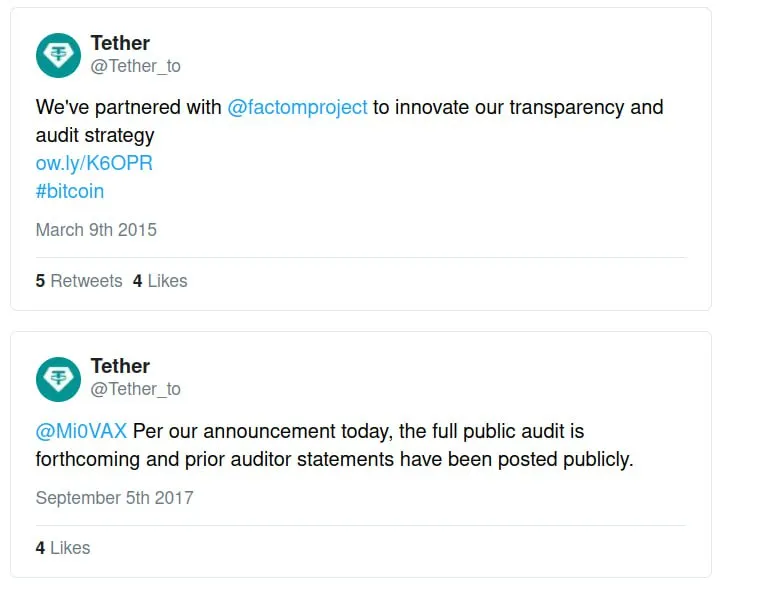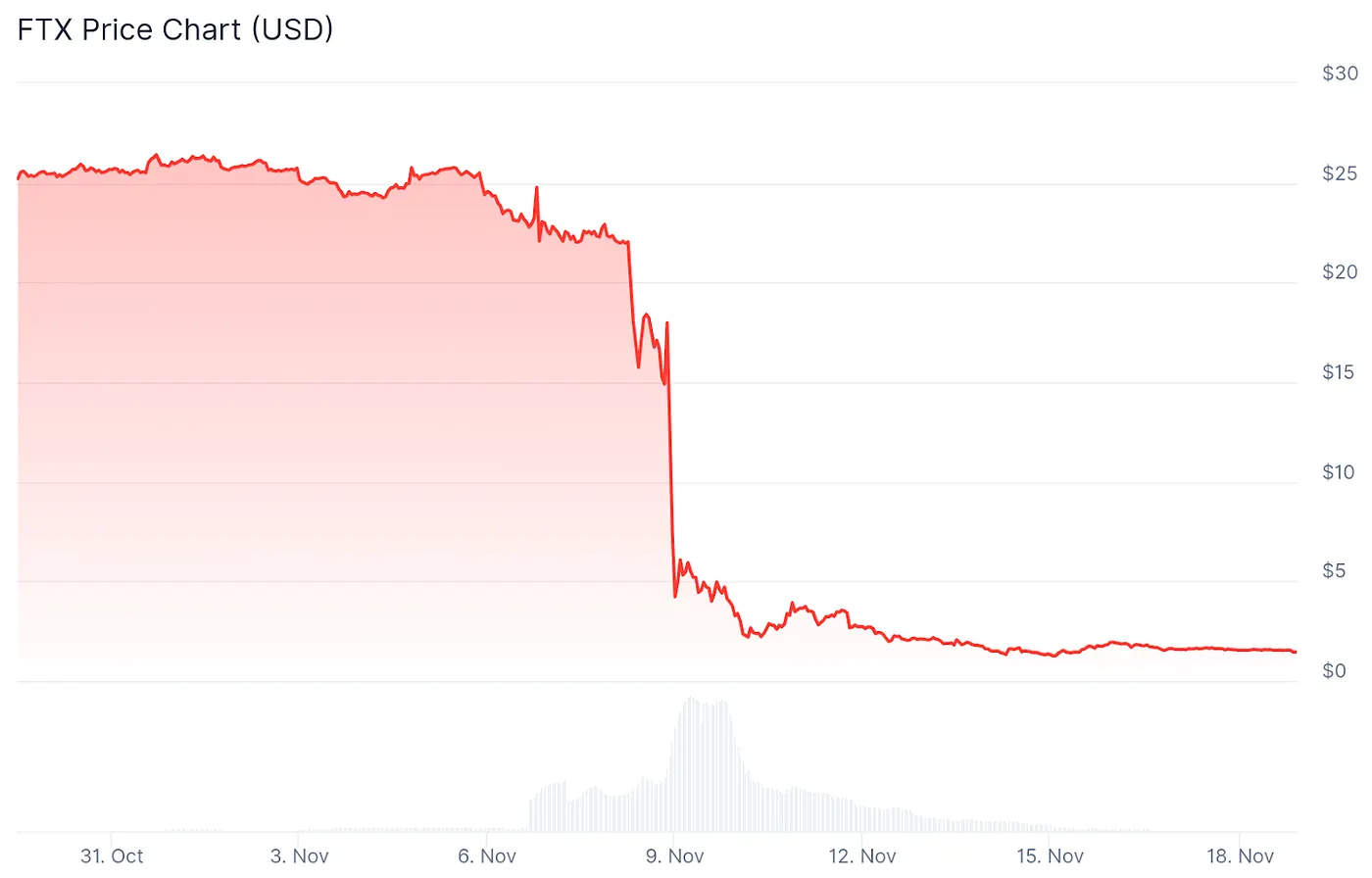
What If USDT Loses Its Peg? Part I: CEXes
After the U.S. passed the GENIUS Act regulating stablecoins, debate over the future of USDT — the most widely used stablecoin — flared up once again. And for good reason: USDT doesn’t meet the new legal requirements.
Tether’s CEO, Paolo Ardoino, quickly responded with a promise to conduct a full audit of the company’s reserves. But here’s the thing — Tether has been making that same promise for years.

So far, the only meaningful check of its reserves wasn’t an audit at all, but a legal investigation. Remember how New York Attorney General Letitia James sued Tether in 2019, and in 2021 forced them to admit they kept issuing USDT even after losing $850 million in backing — which at the time was most of their reserves? Aside from that, I’m not aware of any other serious public verification of Tether’s collateral.
Doubts about the company’s financial health only grew stronger when Tether moved much of its operations from the Cayman Islands to El Salvador in 2025. Why shift from a zero-tax haven to a country with a corporate tax unless you fully trust and support its government? But Tether made that move just as El Salvador had to take out a $1.4 billion loan from the IMF — an institution not exactly friendly to crypto. If Tether made $13 billion in profit in 2024, as it claimed, why didn’t it just fund El Salvador itself? Buy up the bonds? Support an ally? That it didn’t — that El Salvador had to negotiate with the IMF instead — makes you wonder: does Tether actually have that amount of money?
At the same time, Tether buys U.S. government debt in such large volumes that ratings agencies are worried. Back in 2021, Fitch Ratings warned that a sudden mass redemption of USDT could destabilize traditional financial markets, since Tether holds a large share of commercial paper and other short-term instruments.
So yes — USDT remains a ticking time bomb under the crypto market. But how much damage could it actually cause if it blows up? Let’s imagine what a USDT depeg could mean for the industry. In this first part of the article, I’ll focus on how crypto exchanges (CEXes) might be affected.
Let’s say one of three things happens:
- Major USDT holders report that they failed to redeem tokens for dollars.
- An audit — or a new legal investigation — reveals that Tether doesn’t actually hold the hundreds of billions it claims to back its tokens.
- Or maybe the money’s there, but tied up in bonds that suddenly default.
Honestly, I’m not sure which of these scenarios is less likely. In the current climate, they all feel disturbingly plausible. And no one knows when it could happen. Maybe not today or tomorrow — maybe not for years. But sooner or later, any of these risks could play out, and the moment they do, 1 USDT will no longer equal $1 in people’s minds.
The first reaction on exchanges would be panic selling. Traders would rush to dump USDT for safer assets — reliable cryptos, other stablecoins, or fiat. Given how much trading volume is denominated in USDT (check CoinMarketCap — it’s higher than even Bitcoin or any other asset), that panic would immediately overwhelm the order books. BTC/USDT would spike. USDC/USDT would spike. But what happens next?
Who’s buying all that panic-sold USDT? Not your average user — mostly market makers. These are professional traders, often closely tied to the exchange, whose job is to constantly provide liquidity: placing buy and sell orders across pairs like BTC/USDT to keep the market flowing.
Here’s what happens inside the order book during a panic:
- A flood of USDT sellers. Millions of users simultaneously slam the “Sell USDT / Buy BTC” button, flooding the book with market orders.
- Market makers step in. Their algorithms do what they’re designed to do: buy up the incoming USDT, offering BTC from their own reserves. But they do it at increasingly worse rates — either selling BTC for more and more USDT, or effectively buying USDT at steeper and steeper discounts.
- Toxic asset buildup. Market makers end up holding a growing pile of devalued USDT while their BTC reserves — the assets everyone actually wants — get drained.
- Market makers exit. These aren’t charities. After absorbing heavy losses and accumulating a toxic asset, they stop fulfilling their obligations to the exchange. They have no reason to stick around and every reason to withdraw what’s left of their good assets — BTC, ETH, USDC, whatever they can salvage.
- The book dries up. Without market makers, there’s no one left who’s required to buy crashing USDT. And let’s be honest — who would step in voluntarily? Trading in USDT pairs may remain technically possible, but it becomes practically frozen.
Now let’s talk derivatives — where trading volumes are even higher than on spot markets. Open interest is heavily concentrated in instruments collateralized and settled in USDT (again, you can verify this on CoinMarketCap). If that collateral suddenly drops in value, it triggers mass liquidations. And here’s the kicker: it hits both longs and shorts. Why? Because both sides posted their collateral in USDT.
Longs at least see some offsetting benefit if the price of the crypto asset they’re betting on rises. But with USDT pairs swinging wildly, index prices — the benchmarks used to determine when a position gets liquidated — become chaotic and unpredictable. The result: mass liquidations on both sides. Longs, shorts — everyone gets wiped.
The scale of this would be hard to even imagine. The flash crash of March 2020 would feel like a summer breeze in comparison. I’m confident that in a USDT crisis of this scale, exchanges would have no choice but to halt trading on USDT-margined derivatives. Open positions would likely be frozen, along with the collateral backing them. Which means: if your USDT is tied up in futures, you won’t be able to withdraw it.
What happens next? Obvious: a flood of withdrawals from the exchanges. Clients will start thinking, “If they’re already freezing derivatives traders, how long before they freeze everyone else? I’d better get my money out now.” But will exchanges actually be able to honor those withdrawals?
Here’s the uncomfortable truth: most exchanges don’t keep client assets in fully segregated accounts. Instead, customer funds and the exchange’s own operational funds are lumped together in one big pool. That’s been the norm since Mt. Gox — and FTX showed that not much has changed. Even after FTX’s collapse, the practice seems to continue. Yes, the biggest exchanges (Binance, OKX, Kraken) now publish regular reports claiming their assets cover client liabilities 1:1. But the very existence of these reports strongly suggests that funds are still being pooled. None of these platforms even attempt to prove that the structure of their holdings matches client balances. They only try to show that the total value exceeds obligations.
At rabbit.io, when you make an exchange, you don’t just get a promise that your crypto will be delivered on demand — you receive actual coins or tokens directly into your personal wallet. But that’s not how it works on CEXes. It’s unlikely that they physically hold all the assets they list for trading. What they do have is the ability to quickly obtain those assets — but only as long as their own funds remain liquid and aren’t losing value by the minute. That’s exactly why crypto exchanges keep a significant share of their reserves in USDT — historically one of the most stable and liquid assets. But if USDT loses its value, many exchanges won’t be able to fulfill withdrawal requests in other cryptocurrencies either.
Remember what triggered the collapse of FTX? On November 8–9, 2022, in the midst of a broader crypto market downturn, the native token of the exchange suddenly tanked — and that token happened to be the main reserve asset of Sam Bankman-Fried’s holding company. Just two days later, on November 11, FTX filed for bankruptcy.

Source: Coingecko
Note: the sharp drop in FTT price wasn’t the result of FTX going bankrupt — it was the cause. The crash came before the bankruptcy and directly triggered it. The same thing will happen to any exchange that keeps most of its reserves in USDT, relying on its stability. If panic selling breaks the peg, their balance sheets go underwater almost instantly.
So who gets hit if USDT depegs?
- First, the exchanges themselves. Many could go bankrupt.
- Second, the market makers — they’ll take the first blow.
- Third, traders with futures positions collateralized in USDT.
- And finally, everyone who doesn’t manage to withdraw in time.
The only potential exception might be onchain derivatives exchanges. If you’re trading derivatives, I’d strongly recommend looking into those. Hyperliquid, ParaDEX, PowerDEX, and several others offer full transparency — and although they take custody of your funds, they do so by assigning each user a separate blockchain address. Nothing is lumped into a “common pot.” Moreover, on these platforms, USDT is rarely used as collateral — most often it’s USDC. That won’t save you from wild volatility and mass liquidations, of course. Some of these exchanges might still have to pause trading and freeze positions temporarily. But the key difference is: the risk of bankruptcy due to asset devaluation is much lower. Client funds are fully visible. It’s too dangerous to use them for exchanges’ own operations.
In Part II of this article, I’ll explore what a USDT collapse could mean for DeFi protocols, for users holding USDT in self-custody, and even for those who don’t hold USDT at all. The consequences might be just as dramatic as on CEXes — but I’ll also try to highlight a few silver linings.
I’ll be posting Part II right here exactly one week from now.













